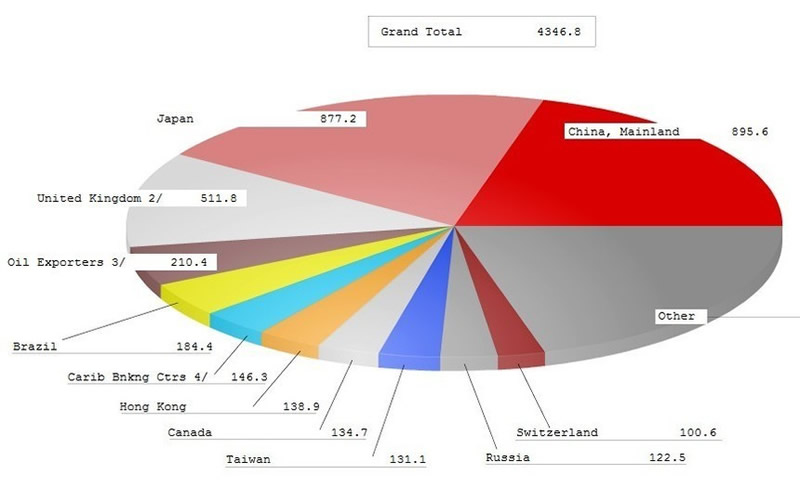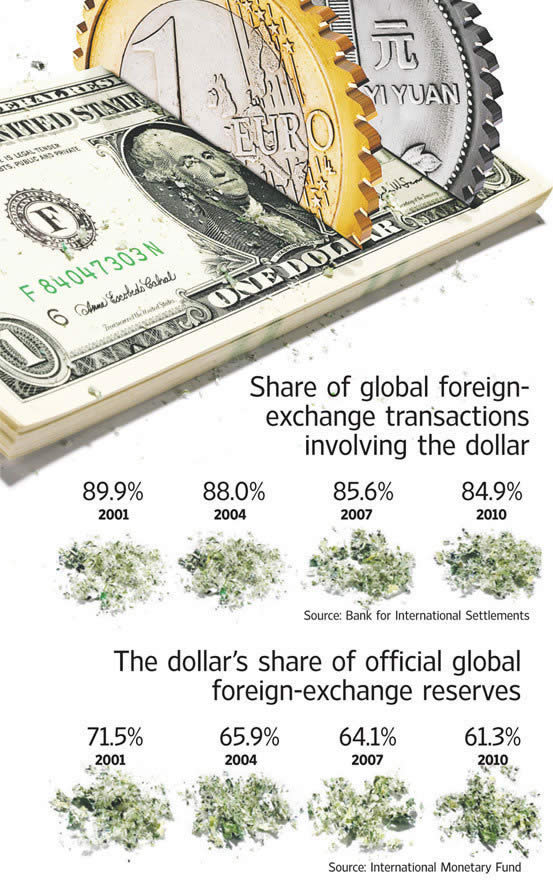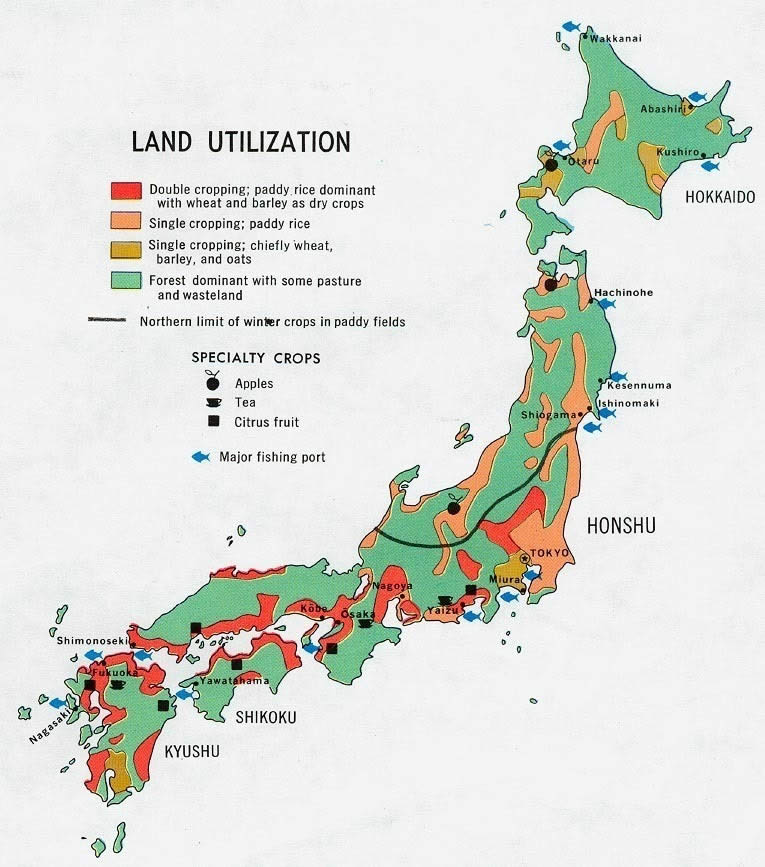Japan Quake Shakes U.S. Treasury Bond Market Get Ready for Financial Meltdown
Interest-Rates / US Bonds Mar 18, 2011 - 06:35 AM GMTBy: LEAP
 Beyond its tragic human consequences (1), the terrible disaster that has just hit Japan weakens the shaky US Treasury Bond market a little more. In the GEAB No. 52, our team had already explained how the sequence of Arab revolutions, this fall of the “petro-dollar” wall (2), would translate during 2011 into the cessation of the massive purchases of US Treasury Bonds by the Gulf States. In this issue, we anticipate that the sudden shock experienced by the Japanese economy will lead not only to the halt in US T-Bond purchases by Japan, but it will force the authorities in Tokyo to make substantial sales of a significant portion of their US Treasury Bond reserves to finance the enormous cost of stabilization, reconstruction and revival of the Japanese economy (3).
Beyond its tragic human consequences (1), the terrible disaster that has just hit Japan weakens the shaky US Treasury Bond market a little more. In the GEAB No. 52, our team had already explained how the sequence of Arab revolutions, this fall of the “petro-dollar” wall (2), would translate during 2011 into the cessation of the massive purchases of US Treasury Bonds by the Gulf States. In this issue, we anticipate that the sudden shock experienced by the Japanese economy will lead not only to the halt in US T-Bond purchases by Japan, but it will force the authorities in Tokyo to make substantial sales of a significant portion of their US Treasury Bond reserves to finance the enormous cost of stabilization, reconstruction and revival of the Japanese economy (3). With Japan and the Gulf States alone accounting for 25% of the total 4.4 trillion USD of US federal debt (December 2010), LEAP/E2020 believes that this new situation which is asserting itself during the first quarter of 2011, against a background of China’s increasing reluctance (holding 20% of US Treasury Bonds) to continue to invest in US government debt (4), carries the seeds for the collapse of the US Treasury Bond market in the second half of 2011, a market that now has only a single buyer: the US Federal Reserve (5).
It is certain that the context of the crisis of US local authority securities (Munis) and European government debt (the entire periphery of the EU, including the United Kingdom) that our team anticipated for this timeframe (see GEAB N°50 ), will only exacerbate the event. Moreover, it is highly significant that PIMCO the world’s largest bond fund manager decided, at the end of February 2011, to liquidate its US Treasury Bond holdings. And that was before the disaster in Japan (6)!

Major holders of US Federal Debt (10/2010) - Sources: US Treasury / Dave's Manuel
. the introduction of budget austerity in the US (as anticipated in GEAB No. 47) which condemns US local authorities to a major crisis in the market for their debt ("Munis")
. impossible for the Fed to introduce QE3
. the inevitable rise in interest rates against a backdrop of global inflation
. the end of safe-haven status for the US currency.
Of course, these events are related and, characteristic of a major crisis, we are entering a period that will see a mutual strengthening of their effects, leading to this sudden shock in the second quarter of 2011. Incidentally, we could add a fifth event: the complete decisional paralysis of the US powers. The daily confrontation on virtually all subjects, between Republicans (hardened by the "Tea Parties") and Democrats (demoralized by an Obama administration that has betrayed the substance of its campaign promises (7)), tends to show, a little more each day, that Washington has become a sort of "Ship of Fools ", tossed about by events, without any strategy, without willpower, incapable of action(8); in other words, according to LEAP/E2020, when the US Treasury Bond collapse begins, one cannot expect anything from Washington other than a colossal squawking that will only worsen the crisis.
In this issue’s public announcement, we have chosen to present our anticipation of the Japanese shock on a global scale, in particular in terms of inflation and geopolitics, in more detail. The other events that lead to the collapse of the US Treasury Bond market in the second half of 2011 are analyzed in this issue, where we also set out our recommendations to address the clear worsening of the global geopolitical dislocation process.
The triple disaster that has just hit Japan (earthquake, tsunami and nuclear accident) is a crucial event that will accelerate and intensify the global systemic crisis, and in particular the process of global geopolitical dislocation.
The scale of destruction, the direct impact on the energy infrastructure of the third (or fourth) largest economy in the world (9), the severity of the accidents at the nuclear power plants (10), ... is one of the major shocks which the current international system is no longer able to withstand as we anticipated in the GEAB N° 51 ("2011: The Ruthless Year "). Japan, already seriously weakened by a chronic economic crisis that has lasted for twenty years and whose government debt is one of the largest in the world, now finds itself faced with the need to both finance a large-scale reconstruction and secure major change over an indefinite period characterized by a limitation of available energy and the disruption of commercial and industrial supply chains. Yet Japan is a fundamental part of the system of global governance of recent decades. Tokyo is one of the world’s major financial centers, one of the three management hubs of the foreign exchange markets (along with London and New York) and the Japanese economy supplies a quantity of electronic components vital to the global economy. Finally, as we have analyzed in past issues, it is, with the United Kingdom, one of the two "floats" (11) that has allowed the US to manage global economic, monetary and financial affairs for over fifty years.
For several years now this "float" has been increasingly attracted to the Chinese sphere of influence, keeping pace with China’s increasing strength and the weakening of the United States. The crisis triggered by the earthquake will, according to LEAP/E2020, greatly accelerate this trend particularly because today, only China has the capacity to provide massive financial aid to Japan (12), while directly helping its economy by opening the huge Chinese market to Japanese business even more (13).

The falling share of the US Dollar in global foreign exchange transactions (first section) and global foreign exchange reserves (second section) Sources: BRI / FMI / Wall Street Journal, 03/2011
• the abrupt end to the policy of the expansion of the civil nuclear industry worldwide (14) will rapidly increase pressure on the price of oil (15), gas and coal
• the shortage of many vital electronic parts which will mean higher prices for electronic equipment (from computers to flat screen TVs (16)) because of power cuts that affect plants and transport disruption (17)
• increased pressure on world food and energy prices (18) due to a significant increase in Japanese food imports (especially rice) since the area affected is one of the country’s major agricultural regions (see map below)
• a further decline in the world economy following the global consequences of the near-halt of the Japanese economy, champion of both exports and "just-in-time" delivery (19), which will limit as much the "deflation" effect of globalized trade (20)
• and finally, a double phenomenon of a falling yen due to massive injections of liquidity by the Bank of Japan and the immediate increase in the worldwide "borrowing cost" of money (higher interest rates) because of Japan’s huge needs to carry out its reconstruction.

Japanese land utilization (red: double cropping-mainly paddy rice, with wheat and barley / pink: single crop rice/brown: single crop –mainly wheat, barley and oats/ green-mainly forest with some pasture and wasteland) - Source: Columbia University, 2009
Whist hoping that this extreme situation doesn’t materialize, our team believes that the shock that has taken place will, therefore, result in a sudden worsening of the global systemic crisis and that the US Treasury Bond market will be the first major collateral casualty from the second half of 2011, as we analyze in detail in this issue. Thankfully the worst situation may not happen but, on the other hand, there’s no doubt that it’s very serious.
Notes:
(1) In these tragic circumstances, the LEAP/E2020 team would like to express its solidarity with the people of Japan and in particular with our numerous Japanese subscribers and visitors to our website. We would also like to emphasize that our very “clinical” analysis of the consequences of the catastrophe that Japan has just suffered is not a mark of indifference but simply the respect of our methodology which aims to limit the subjective elements at the heart of our anticipations to the strict minimum likely.
(2) Even the Telegraph of 02/24/2011 now interprets the grassroots Arab revolution as the fall of the Middle Eastern US empire.
(3) Source: JapanToday, 03/14/2011
(4) According to the German edition of the FT, the Chinese central bank has even been given instructions to not buy any at all anymore. Source : FT Deutschland, 10/03/2011
(5) Before the Japanese disaster, it was estimated that the Fed had become the primary holder of US Treasury Bonds, having already purchased more than 70% of new issue. In the coming weeks this proportion will, step-by-step, approach 90% to 95%. Because, even despite its docility vis-à-vis US pressure, the United Kingdom which each day sinks a little further into the new phase of the crisis, the "double-dip-flation" as our team calls it, can no longer afford to buy US Treasury Bonds: it is too busy repurchasing its own government debt. Moreover, according to Karen Ward, one of HSBC's main economists, the British government could face hunger riots if food price continue to soar the way they have been doing in the past few weeks. Source: SkyNews, 03/09/2011
(6) In the short term, the flight from stocks (Japanese and others) will benefit US Treasury Bonds, but it’s a temporary event. Source : CNBC, 03/09/2011
(7) The latest is the reopening of the Guantanamo trials whilst he had promised the closure of the prison within a year after his election at the latest, thus drawing millions of voters from the left of the Democratic Party.
(8) France is the other major western country whose leadership finds itself in the same situation.
(9) Depending on whether one considers Euroland as an economy on its own. Yet the March 11 summit that continued to tighten the budgetary and financial integration of Eurozone countries makes the position of wanting to continue to separately count the Eurozone countries’ combined major economic numbers more and more absurd. Thus, with a GDP of €8.4 trillion, Euroland is in second place behind the US (€10.428 trillion) at a current exchange rate of 1 €/$ 1.4, and way ahead of China (€4.1 trillion) and Japan (€3.85 trillion). Sources: Wikipedia, Eurozone, Countries listed by GDP.
(10) Without even mentioning at this stage the risk of partial or complete neutralization of the Tokyo region, one of the key cities of the world in recent decades, due to nuclear contamination.
(11) Like a trimaran.
(12) Keep in mind that Beijing seeks by all means to quickly, but profitably, get rid of its mountain of Treasury Bonds and US Dollars. The cataclysm that Japan is currently suffering will thus offer Chinese leaders a unique opportunity to strategically align Tokyo with Beijing.
(13) Conversely, the highly controversial US troop presence in Japan will materialize in Japanese public opinion, as all the more anachronistic and useless in the face of the current disaster. This is another example, as we have already seen in the case of the Arab revolution, of the growing uselessness of the huge US military machine: in crisis after crisis, it is becoming obvious that it is of virtually no use in enabling the US government to influence events.
(14) It is in fact certain that civil nuclear power has just come to a sudden halt from which it will be very hard to recover, especially because this disaster now joined in the conflict between the elite and public opinion that the global systemic crisis exacerbates a little more on a daily basis. We can already include France amongst the countries that will suffer the full brunt of this "revolution" vis-à-vis nuclear energy which has, for nearly fifty years of civil nuclear energy, made it one of the jewels of its technology and exports. Source: Spiegel, 03/14/2011
(15) One factor that will strengthen the inexorable progression in the Gulf region towards a situation of chaos, even direct conflict between Shiites and Sunnis, between the people of the region and their leaders, between Iran and Saudi Arabia. Sending Saudi troops to Bahrain is an indication of the escalating risks in the region just as the financial implications for the UAE who are trying to urgently alleviate forty years of neglect of entire segments of their population. Sources: AlJazeera, 03/15/2011; New York Times, 03/10/2011; AlJazeera, 03/10/2011
(16) One of the few "bearish" sectors which allowed the soaring price of food and energy at the core of many price indices to be hidden. So even in China and throughout Southeast Asia, the impact of Japanese spare-part shortages is already being felt with immediate price rises as the Japanese electronics industry has massively relocated entire parts of its production throughout Asia while keeping strategic manufacturing in Japan. Source: China Daily, 03/15/2011
(17) Around the world we will experience shortages of Japanese cars and spare parts for them. Given the global importance of the Japanese automobile industry, there will be no solution of an easy alternative which can be implemented. Thus, even in India, yet little dependent on Japanese brands, the impact is already being directly felt with the cancellation of sales and promotion of new models by the major Japanese manufacturers. Source: Times of India, 03/15/2011
(18) Several Japanese refineries have been destroyed. That implies increased Japanese imports of refined products which are already causing petrol price rises in the US. Source: USAToday, 03/14/2011
(19) The Chinese and German export economies (as well as those of South Korea, Taiwan…) will also suffer the negative consequences of this development.
(20) It is important to keep in mind that the decline in the globalization of trade in favor of a focus on regional economic zones endowed with a single or dominant currency (EU, Asia, Latin America ...) involves a simultaneous decrease in the need for US Dollars to finance international trade. See previous GEAB issues.
(21) This would also lead to international consequences in terms of radioactive fallout.
GEAB is an affordable and regular decision and analysis support instrument intended for all those whose work involves some understanding of ongoing and future global trends seen from a European point of view: advisors, consultants, researchers, experts, heads of public institutions, research centres, international companies, financial institutions and major NGOs.
Available in: Français, English, Deutsch, Español
Frequency: Monthly - 10 issues a year published on the 16th of each month (interruption in July/August)
Contributors: Every issue is coordinated by Franck Biancheri and mobilises the totality of our research teams
© 2011 Copyright LEAP - All Rights Reserved Disclaimer: The above is a matter of opinion provided for general information purposes only and is not intended as investment advice. Information and analysis above are derived from sources and utilising methods believed to be reliable, but we cannot accept responsibility for any losses you may incur as a result of this analysis. Individuals should consult with their personal financial advisors.
© 2005-2022 http://www.MarketOracle.co.uk - The Market Oracle is a FREE Daily Financial Markets Analysis & Forecasting online publication.



